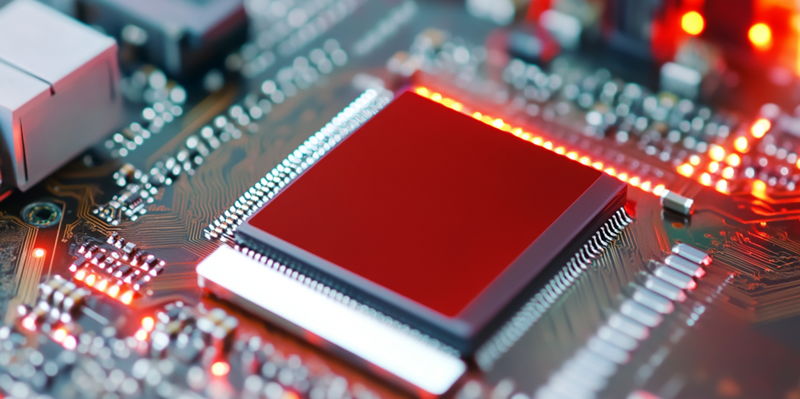The central processing unit (CPU) industry is experiencing a significant shift as recent data highlights a stark contrast between Intel’s and AMD’s sales performances. Intel’s struggle is most evident in Amazon’s top 10 best-selling list, where none of its CPUs make an appearance. In contrast, AMD’s processors, spanning multiple generations, command this space effortlessly. This notable change in consumer preferences toward AMD underlines a broader trend: AMD’s rise, fueled by effective pricing and technological advancements, is overshadowing Intel’s market presence.
AMD’s Ruling Bastion
Strong Performance Across Multiple CPU Generations
AMD’s market dominance has been driven by the success of various processors such as the Ryzen 7 5700X, Ryzen 5 5600X, Ryzen 7 7800X3D, and the latest Ryzen 7 9800X3D. These models are now household names among tech enthusiasts due to their impressive performance metrics and competitive pricing. The Ryzen 7 5700X and Ryzen 5 5600X, in particular, have captivated consumers by delivering excellent performance in gaming and productivity tasks without breaking the bank. The newer Ryzen 7 7800X3D and Ryzen 7 9800X3D showcase AMD’s commitment to innovation, featuring advanced 3D V-Cache technology that significantly boosts performance.
Consumer preference continues to lean heavily towards AMD, cementing its products as the go-to choice for many. The demand for Ryzen 7 7800X3D and Ryzen 7 9800X3D highlights how AMD’s innovative approaches resonate with users, who are increasingly seeking cutting-edge performance at reasonable prices. While Intel has attempted to counter this with its own offerings, such as the Arrow Lake "Core Ultra 200" series, the effort has not yielded the desired impact. The inability to break into the top-selling echelon on platforms like Amazon suggests that Intel’s strategy might need reevaluation to keep pace with AMD’s momentum.
Intel’s Struggles in the Market
Fading Presence on Major Retail Platforms
Intel’s recent attempts to recover market share with its Arrow Lake "Core Ultra 200" CPUs have not borne fruit, showcasing an ongoing struggle to compete against AMD’s lucrative offerings. Even one of Intel’s highly regarded chips, the Core i5 13600KF, which once held a prominent spot in sales rankings, has seen its popularity wane. It now ranks 12th on Amazon, trailing behind AMD’s broad lineup of Ryzen processors. This shift has occurred despite Intel’s aggressive pricing strategies aimed at attracting consumers.
The disparity in sales success between AMD and Intel is also visible on other major retail platforms. On Newegg, AMD dominates the scene, consistently holding several top spots in CPU sales. Although Intel manages to secure four places in Newegg’s top 10, the contrast remains evident. These patterns are not confined to the United States; markets worldwide reflect a similar shift. In Germany, for example, AMD commands a staggering 94.49% CPU sales share at Mindfactory, a major retailer. Meanwhile, Intel’s sales have dramatically decreased, with the tech giant struggling to regain its foothold.
International Market Trends
The trend extends beyond the traditional tech-savvy markets of the United States and Europe. In South Korea, a country known for its technological advancements and savvy consumers, AMD has forged a commanding 62% market share within the DIY desktop processor segment over the past year. This substantial growth indicates that AMD’s strategies and product offerings resonate globally, capturing a diverse consumer base ranging from casual users to hardcore enthusiasts.
AMD’s market strategies, such as focusing on high-performance sectors and innovating advanced technologies like 3D V-Cache, have paid dividends. To maintain its position, AMD’s continuous innovation in creating cost-effective yet powerful CPUs is paramount. In contrast, Intel’s response has been somewhat lackluster, underscoring a need to overhaul its approach to product development and market strategies to remain competitive. This transformation in the CPU landscape indicates a broader shift, with consumers increasingly swayed by AMD’s compelling mix of performance and value.
The Future of the CPU Market
A Profound Shift and New Challenges Ahead
The central processing unit (CPU) industry is undergoing a notable transformation as recent statistics reveal a pronounced disparity between Intel’s and AMD’s sales performances. Intel’s struggle is particularly apparent in Amazon’s top 10 best-selling list, where none of its CPUs are featured. On the flip side, AMD’s processors, covering various generations, dominate this space with ease. This remarkable shift in consumer preference toward AMD highlights a broader industry trend: AMD’s ascent, driven by competitive pricing and technological innovation, is overshadowing Intel’s market presence.
AMD’s focus on delivering high-performance products at more affordable prices has resonated with consumers and professionals alike. The company’s Ryzen series, known for its excellent multi-threading capabilities, has been particularly well-received. As AMD continues to push the envelope with cutting-edge technology and value-for-money propositions, it is attracting a growing customer base. This shift indicates a significant change in the market dynamics that were once heavily dominated by Intel. AMD’s strategic efforts are not only enhancing its reputation but also eroding Intel’s long-standing dominance in the CPU market.

